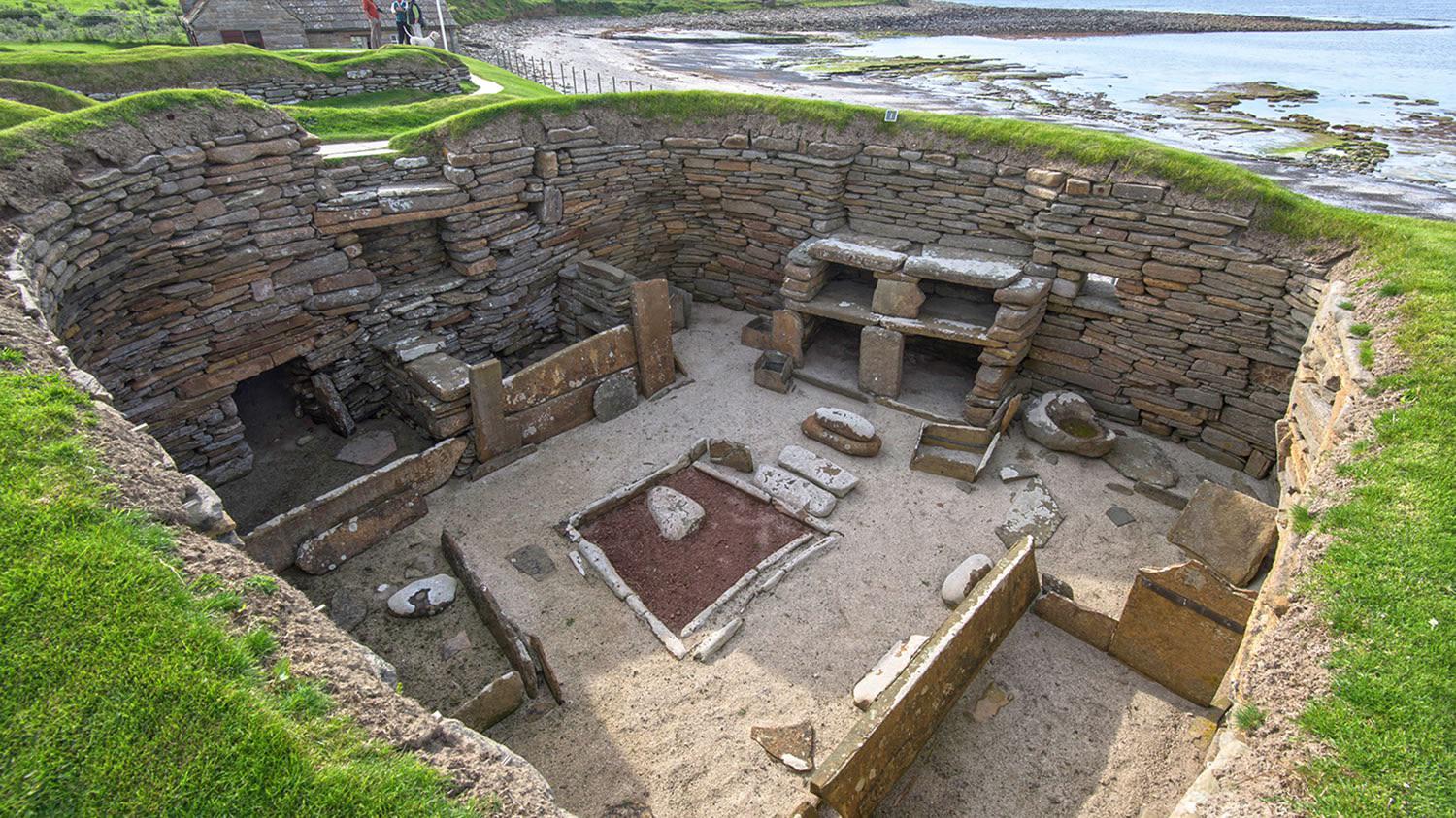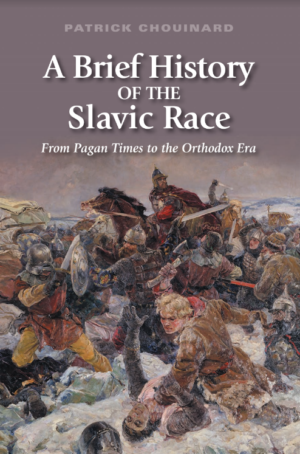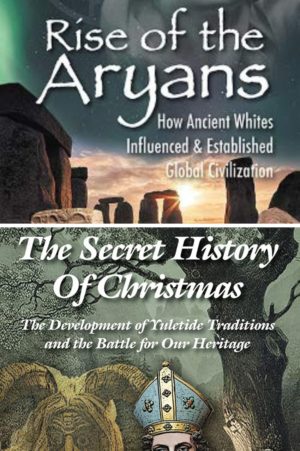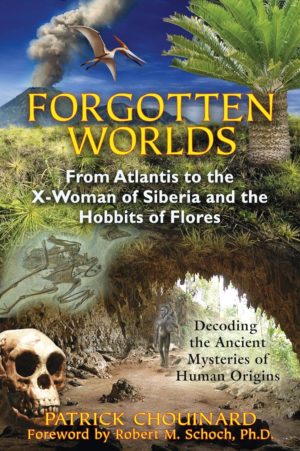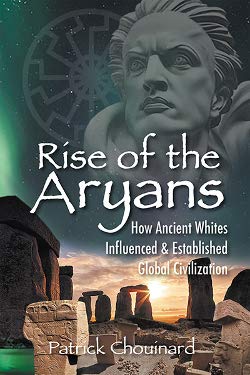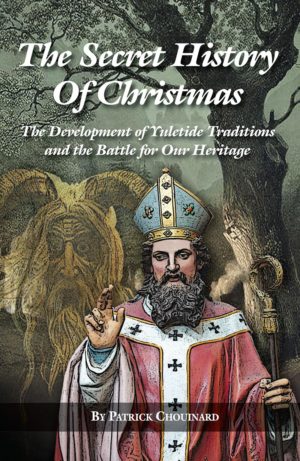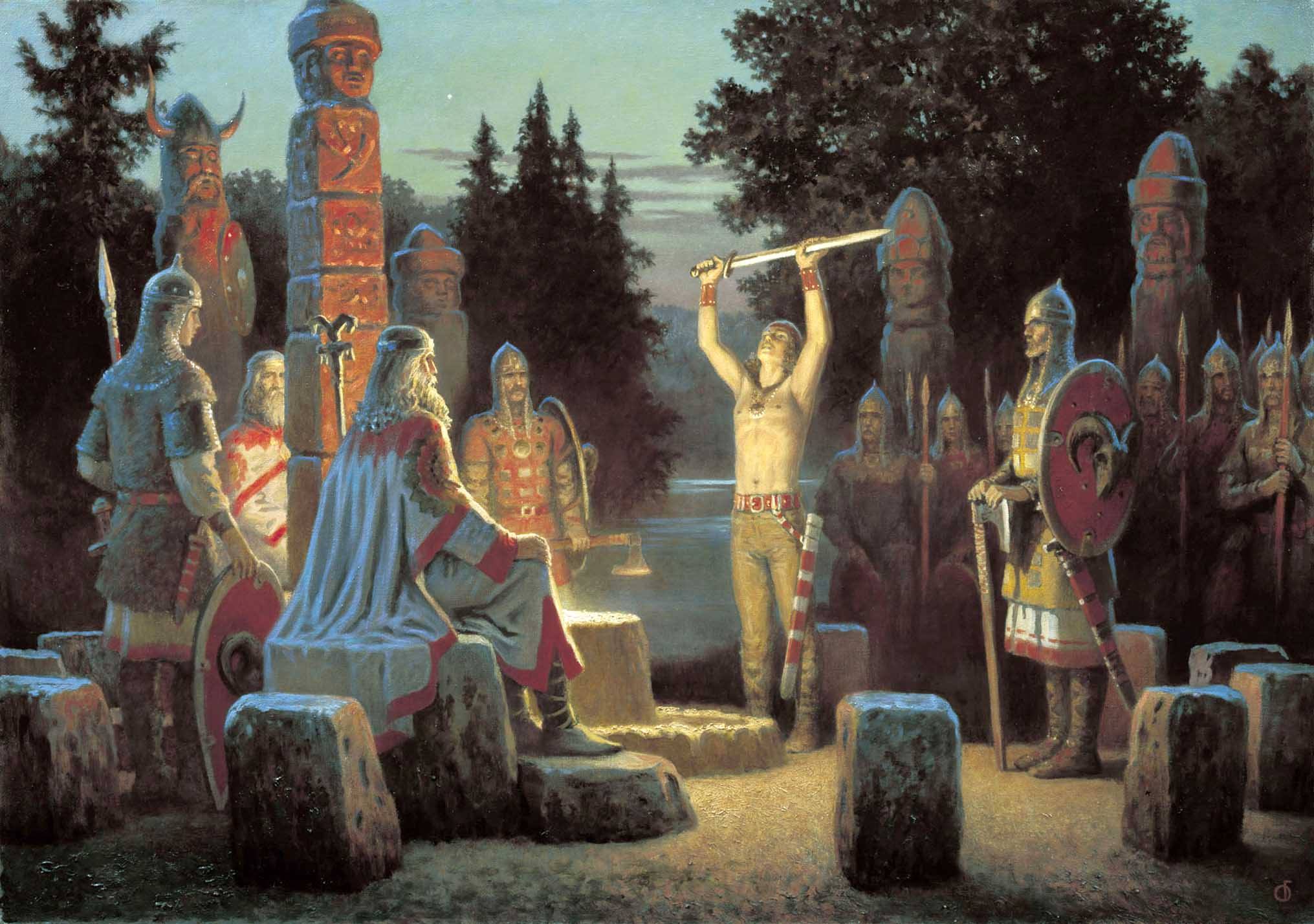Excerpt from the upcoming book Ancient Aryans: The Prehistoric Origins of the World’s First Civilization
In March of the Titans, writer and nationalist publisher Arthur Kemp writes: “It is most certainly true that the great cities and states in the Near and Middle East were towering achievements, but it is incorrect to regard them as the only flowering of civilization at that time. . . The earliest farming sites in northern Europe are to be found in Ireland, occuring at approximately the same time as the cultivation of the first crops in the Mesopotamian River valley in the Near East.” (Tsarion, “The Irish Origins of Civilization,” Kindle Edition).
Europe is often overlooked when it comes to ancient civilizations, yet beneath its picturesque landscapes and bustling cities lie hidden treasures that can rival the wonders of any other continent. With an insatiable thirst for knowledge and fearless exploration, the latest group of experts in Europe’s past have become authorities on lost white civilizations, uncovering evidence that hints at a forgotten chapter in Europe’s history.
In her book The Lost History of the Little People, my colleague Susan B. Martinez writes: “It is only within recent time, relatively speaking, that we have begun to understand the high civilizations of antiquity. Yet, as historians have long noted, they seem to have sprung up suddenly and without precedent. What then lies behind the greatness of the Maya, Inca, Egyptians, Sumerians? Eighty years have elapsed since Geoerge C. Valliant said: “The great civilizations of the Aztecs and the Mayas are like flowers, but of the stalk, which bore them and gave them nutriment, we have scant knowledge. Who knows what discovery awaits us that may alter our entire conception of the unfolding of Middle American civilization?” The ultimate link to this high civilization is Europe, as further research demonstrates a primordial link between the lost race of ancient Cacuasians that founded Europe, and what now appears to be a forgotten white race that founded many of the great civilizations all around the globe. This reality is contained not only in the archaeological and genetic record, but in the mythology of nearly every culture on the planet. Everywhere, we see the same artistic motif of the giant, blond, bearded, Caucasian gods, and tales of their great building achievements and scientific knowledge. We see such descriptions not only in places like Africa and Mesoamerica, but even in Europe itself among the Vikings and Slavic peoples. Such reports seem to go along with reports of UFOs and unexplained phenomena. Both are definitely connected.
The Upper Paleolithic: A Time of Racial Revolution
William Luther Pierce called the Upper Paleolithic period “a time of racial revolution” as he cited the rise of the first genuinely white race to come to dominate Europe and the world. An extraordinary discovery from the Upper Paleolithic period is the well-preserved remains of a fully clothed adult Caucasian male. This individual was unearthed in Sungir, Russia, and is estimated to have been buried approximately 25,000 years ago. This individual most likely belonged to the race of people responsible for initiating the first stages of White civilization during the main interglacial period, which began around 40,000 B.C. The complexity of the beadwork and the quality of the material used to bury the corpse serve as indications of the advanced craftsmanship of the White Upper Paleolithic man. The discovery of houses made from Mammoth bones and hide in southern Russia, dating back to 30,000-20,000 B.C., indicates a significant level of advancement during that time period. (Sutherland 2014, wwww.burlingtonnews.net). This may hint at the prospect that there were other European or West Eurasian civilizations even more powerful and advanced than the Upper Paleolithic Period civilization in Russia and in the same time period.
European Flood Myths
An iconic image often associated with the destruction of Atlantis, is the Great Flood which is also linked to the story of Noah in the Bible. Beyond Plato’s account, Europe has its own stories of great floods that swept away a now forgotten civilization and purified the planet for the emergence of a greater Aryan humanity. The potential destruction of such a lost European civilization also takes precedent in our discussion throughout this book.
The flood myths of the Norse and Greek cultures, although originating from different cultural contexts, have notable resemblances in their storytelling, illustrating the common subject of catastrophic flooding and the struggle for survival.
The flood myth in Norse mythology is represented by the story of Ymir’s death and the consequent inundation caused by his blood. Odin, accompanied by his family, finds sanctuary on a ship made from the remnants of Ymir’s corpse. The Prose Edda, namely the Gylfaginning portion, has a comprehensive description of the survival and rejuvenation of the Earth following the flood.
 The story of Deucalion and Pyrrha in Greek mythology includes a flood myth that runs parallel to other flood myths. When Zeus chooses to purify the earth by eliminating its morally corrupt inhabitants, Deucalion, a righteous man, and his wife Pyrrha are spared. Under the guidance of the deity Prometheus, they replenish the Earth by hurling stones in their wake, which metamorphose into human beings, so reinstating life following the deluge. This account is present in multiple ancient Greek literature, including Ovid’s “Metamorphoses.”Both myths emphasize the recurring pattern of creation, annihilation, and regeneration. Floods act as celestial purifications, purging the globe of moral decay and preparing the ground for a fresh start. Furthermore, the survival of the characters, namely Odin’s family and Deucalion and Pyrrha, is directly connected to their moral virtue, as they are protected from harm thanks to their righteousness.
The story of Deucalion and Pyrrha in Greek mythology includes a flood myth that runs parallel to other flood myths. When Zeus chooses to purify the earth by eliminating its morally corrupt inhabitants, Deucalion, a righteous man, and his wife Pyrrha are spared. Under the guidance of the deity Prometheus, they replenish the Earth by hurling stones in their wake, which metamorphose into human beings, so reinstating life following the deluge. This account is present in multiple ancient Greek literature, including Ovid’s “Metamorphoses.”Both myths emphasize the recurring pattern of creation, annihilation, and regeneration. Floods act as celestial purifications, purging the globe of moral decay and preparing the ground for a fresh start. Furthermore, the survival of the characters, namely Odin’s family and Deucalion and Pyrrha, is directly connected to their moral virtue, as they are protected from harm thanks to their righteousness.
Nevertheless, cultural intricacies influence the formation of these myths in distinct ways. In Norse mythology, the cataclysmic catastrophe is intricately linked to the cosmogonic formation of the universe, highlighting a recurring pattern of devastation and rebirth. Conversely, the Greek flood myth emphasizes the impact of divine choices on human destiny and ethical deliberations.
Although originating from different cultural backgrounds, the Norse and Greek flood myths exhibit many themes that reflect humanity’s innate tendency to confront profound inquiries on existence, ethics, and the repetitive patterns of life. The similarities in these stories provide insight into the inter-relatedness of human mythologies and the overarching themes that resonate across various civilizations.
The Pre-Aryan Theories of Marija Gimbutas
In the 1950s, archaeologist Marija Gimbutas first presented her Kurgan theory of the origins of the Indo-Europeans: that a matriarchal, Neolithic civilization of pre-Aryans lived in Europe before the invasion of Indo-European tribes in the third millennium B.C. Gimbutas, who was born in Lithuania in 1921, eventually became a professor at UCLA and became known for her groundbreaking research in European prehistory, specifically with regards to the Pre-Aryans and ancient Aryans. She devoted her life’s work to researching Neolithic and Copper Age artifacts, paying special attention to the elaborate iconography and symbolism found on figurines, pottery, and other objects. She believed this was evidence that a matriarchal culture that worshiped a multitude of goddesses once dominated Old Europe and this, Gimbutas suggested, was replaced by a man-centered warrior culture from the steppes, the people we would identify as the Aryans or Indo-Europeans. She describes these cultures in her 1974 landmark book “The Goddesses and Gods of Old Europe,” which emphasized the holy feminine. The lost civilization of pre-Aryans covered the lands of what are now Poland, Ukraine, Slovakia, the Balkans, and northern Greece. These people established the first cities in Europe and made advances in primitive tribal law, but most important, they laid the foundations for a permanent religion (Gimbutas 1982, 1).
Gimbutas was drawn to the idea of her own native region of Lithuania as a possible northern frontier of the Old European civilization. In examining the archaeology of the area, she found evidence of a matriarchy, complete with a bird goddess and a bear goddess. She believed that feminine cults and goddess worshippers dominated all of Neolithic Europe. In this author’s opinion, these artifacts are remnants of a vanished Europe that we have long since forgotten. (These ideas have found a following among certain groups of feminists as well as the feminine faction of the Wicca faith, a form of reconstructed paganism, or neopaganism.)
In Old Europe proper—in the Balkans, Adriatic, and Aegean, as well as nearby Eastern Europe—an upsurge in creativity and imagination led to more complex deities. For the better part of her career, archaeologist Marija Gimbutas worked to clarify the practices of ancient European societies.
The frequent depiction of a bird goddess was one of the recurring themes that Gimbutas saw as suggesting a common religious and cultural foundation. Despite the fact that her beliefs were criticized for being overly speculative, her work enriched our knowledge of ancient European societies and rekindled curiosity about societies that were based around goddesses.
By and large, the discoveries of a growing number of inexplicable remains of out of place, Aryan-like Caucasians, many of them mummies, appearing the world over, have fueled more speculation concerning Gimbutas’ Kurgan theory. She identifies the origin of the ancient Aryan Indo-European-speaking tribes with the culture that constructed the earthen burial mounds known as Kurgans, in the Pontic Steppe region of southwestern Russia nearly 6,400 years ago. This group later left their ancestral homeland and invaded Old Europe, replacing their matriarchal and megalithic way of life with a male centered, sky-god cult (Gimbutas 1982).
The argument for the Kurgan hypothesis is the discovery of large wheels found among the hundreds of blond mummies that were spread from the Pontic Steppe to the Western frontiers of China and then onward to the Gobi Desert and the plains of Mongolia (Gimbutas 1982).
It is clear from both the historical and archaeological record that Asia was once home to a lost tribe—an indigenous and racially dominant Caucasian population. East Asian ethnicity, as it is known today, is relatively recent. There is even stronger evidence suggesting that the native Caucasoid peoples intermarried with the later Mongoloid race advancing from Siberia. Evidence indicates a genetic population far older than even the Mesopotamian or Bactrian cultures. This population is far older than the European or Indian cultures and part of a lost white lineage that is now extinct. Indeed, the Western Aryans are a possible link to a once dominant Caucasian population that, at one time, inhabited much of the Earth. If this is true, the history of East Asia and the world would have to be rewritten. The noted German anthropologist Max Muller stated one hundred years ago that the “first Caucasians were a small company from the mountains of Central Asia” (Coppens 2009b). It is clear that something unusual is linked to these ancient peoples, as there is widespread evidence of anomalous Caucasian-like peoples appearing in remote corners of the world—regions thought to be untouched by European and Western influence. Yet evidence for this only emerges in the physical and genetic record around 900 B.C., the dawning of the Central Asian Iron Age
Pre-Aryan Religious Scholars Speak Further
Another Pre-Aryan scholar, Margaret Murray, explored a new facet of the Pre-Aryan story; she was a folklorist and Egyptologist from Britain. In her contentious book “The Witch-Cult in Western Europe” (1921), she investigated paganism and witchcraft traditions in an effort to link relics of these religions to a pre-Christian, earth-centered faith of Old Europe, before the coming of the Aryan wave. Murray conjectured that the medieval witch trials were really efforts to quell this Pre-Aryan, patrilineal religion. Despite the widespread skepticism among academics, Murray had an incalculable influence on both popular culture and later generations of scientists. So her ideas complimented the research of Gimbutas who had already firmly established the Old European argument through a strong base of archaeological evidence.
Poet and novelist Robert Graves added a literary and mythological slant to the debate about a vanished Pre-Aryan civilization. Divine feminine forces linked to fertility, nature, and creativity were investigated by Graves in “The White Goddess” (1948). Graves constructed a story of a goddess-centered civilization that, in his view, had been enslaved by patriarchal forces by drawing on poetry and mythology from other cultures. Although Graves did not consider himself a scholar in the conventional sense, his writings had a major impact on how people understood ancient traditions and added to the conversation about the erasure of spiritual practices that focused on women.
Gimbutas, Murray, and Graves’s capacity to question and push boundaries is what gives their work its collective impact. Although their interpretations have been the subject of heated disagreement among scholars, they have ultimately sparked more investigation into the complex cultures of ancient Europe. Our understanding of the complicated web of Pre-Aryan cultures and the relationship between culture, spirituality, and human evolution is being shaped by the legacies of these thinkers, whose work is being further advanced in fields such as archeology and anthropology. This book will take the time to explore their ideas further in relation to Old Europe and its Pre-Aryan civilization.
The Neolithic Settlement of Skara Brae
It is clear that contrary to what the social narrative at present claims concerning our white Aryan forefathers, they were far from ignorant barbarians, or a society that progressed slowly on the wheel of history. Recent archaeological research across Europe has provided fascinating insights into the existence of what amounts to a lost European civilization that lasted for millennia, stretching back deep into remote antiquity.
For instance, in the Orkney Islands of Scotland, the discovery of the Neolithic settlement at Skara Brae has shed light on a sophisticated society dating back to around 3100 B.C.. Nestled on the rugged coast of Mainland in the Orkney archipelago of Scotland, it holds within its stone walls secrets and stories of an ancient world, exploring the captivating mysteries of Skara Brae, a time capsule of ancient life.
In 1850, a violent storm swept across the Orkney Islands, unearthing the ruins of an ancient village. What emerged from the sand dunes was an extraordinary archaeological treasure – Skara Brae. As the excavations began, archaeologists were astounded by the remarkably preserved stone structures and the wealth of artifacts that lay within.
Skara Brae consists of eight interconnected houses, built approximately 5,000 years ago during the Neolithic period. The houses have a striking similarity in layout, with stone compartments serving various purposes such as sleeping, cooking, and storage. The advanced engineering and construction techniques used by the Neolithic inhabitants are evident, with durable stone walls reinforced by whalebone and driftwood.
Stepping inside the houses of Skara Brae offers a tantalizing glimpse into the daily lives of its ancient inhabitants. Each house contained stone beds along the walls, complete with built-in stone dressers. Stone shelves and cupboards provided storage for food, tools, and personal items, while communal areas likely served as gathering places for the community. The presence of stone hearths suggests that meals were cooked inside the houses, fostering a sense of warmth and homeliness.
Skara Brae unveils a world of creativity and craftsmanship. Excavations have unearthed a wide array of artifacts, including intricately crafted stone tools, pottery, jewelry, and even gaming pieces made from bone. The sheer quality and variety of these objects reveal a society that valued both functionality and aesthetics.
Skara Brae was not merely a collection of houses; it was a thriving community where people lived, worked, and formed social connections. The village’s central communal building, known as the “workshop,” suggests a place where tools were crafted and skills were shared. The presence of stone furniture reveals a level of collective effort and a sense of belonging.
The Neolithic people of Skara Brae were not only master builders but also adaptable survivors. This surely shows the brilliance and cultural integrity of our ancient white ancestors. The rugged coastal environment of the Orkney Islands presented challenging conditions, but the inhabitants ingeniously crafted their homes to withstand the harsh weather. The use of layers of earth and stone for insulation, along with the reinforcement of walls, allowed them to withstand storms and maintain a comfortable living space.
Skara Brae’s story does not end with its discovery. Archaeological evidence suggests that the village was eventually abandoned, possibly due to changing environmental factors. Over time, the sand dunes engulfed the settlement, acting as a protective shield that preserved Skara Brae for thousands of years. It was this natural preservation that allowed us to unravel the secrets of this ancient village. The remarkably preserved stone dwellings with intricate furniture and drainage systems challenge the notion that Europe was a primitive backwater during this time.
Further south, and dating to a much earlier time than Skara Brae, is the site found in the Bulgarian town of Provadia. Excavations there have revealed an ancient fortified settlement dating back to 4700 B.C.. Like Skara Brae, this thriving community, surrounded by massive stone walls, suggests a level of organization and defensive planning previously unattributed to European civilizations of this era.
The Hallstatt and Le Tene Cultures
The Hallstatt and Le Tene cultures were two significant prehistoric cultures that emerged in Europe during different time periods. The Hallstatt culture originated in the Late Bronze Age and Early Iron Age, around 1200 B.C., in the area now known as Austria. It was named after the village of Hallstatt, where archaeologists discovered a rich array of artifacts and evidence of a complex society. The Hallstatt culture is known for its advanced metalworking techniques, particularly in the production of iron tools and weapons. They were also skilled in salt mining, pottery making, and textile production.
On the other hand, the Le Tene culture developed during the Late Iron Age, starting around 450 B.C., and was named after the archaeological site of La Tene in Switzerland. The Le Tene culture was characterized by its distinct artistic style, featuring elaborate and intricate decoration known as Celtic art. This style was prevalent in metalwork, such as jewelry, weapons, and ceremonial objects. The Le Tene culture also saw advancements in warfare, with the introduction of chariots and the development of intricate fortifications.
Despite their chronological differences, the Hallstatt and Le Tene cultures had some similarities. Both cultures were primarily located in central Europe and shared a strong emphasis on metalworking. They also had complex social structures and engaged in trade networks that extended across Europe. Moreover, both cultures left a lasting impact on the region’s art and material culture, influencing subsequent societies and artistic traditions. The Hallstatt and Le Tene cultures played crucial roles in the development of Europe, paving the way for the emergence of more complex civilizations in later periods.
Iron Age Slavic Cultures
Iron Age Slavic cultures refer to the various societies and civilizations that flourished in Eastern Europe during the Iron Age, from around the 5th century B.C. to the 6th century A.D. These cultures were primarily inhabited by the Slavic-speaking peoples, who shared linguistic and cultural similarities. The Iron Age Slavic cultures were characterized by their agricultural practices, craftsmanship, and social organization.
One prominent Iron Age Slavic culture was the Lusatian culture, which emerged in the region of present-day Poland, Germany, and the Czech Republic. The Lusatian culture was known for its advanced bronze and iron metallurgy, producing tools, weapons, and ornamental objects. They cultivated crops and raised livestock, and their settlements typically consisted of fortified hillforts, evidence of a hierarchical social structure. The Lusatian culture also engaged in long-distance trade, as attested by the presence of imported goods from the Mediterranean and Baltic regions.
Another important Iron Age Slavic culture was the Chernyakhov culture, which thrived in what is now Ukraine, Moldova, and parts of Romania and Bulgaria. The Chernyakhov culture displayed both agricultural and nomadic traits, with a mix of settled farming communities and mobile groups. They were skilled in ceramics, producing intricate pottery with distinctive decorative motifs. The Chernyakhov culture also had a complex social structure, with evidence of social stratification and a warrior elite. This culture played a significant role in the transition period between the Roman Empire and the Migration Period in Eastern Europe.
The Iron Age Slavic cultures contributed to the formation and development of early Slavic civilization and laid the foundation for later Slavic societies. These cultures influenced various aspects of Slavic identity, including language, customs, and social organization. They also left behind a rich archaeological legacy, with numerous artifacts and archaeological sites providing insights into their daily life, technology, and cultural practices. The Iron Age Slavic cultures are an essential part of understanding the history and heritage of the Slavic peoples in Eastern Europe.
The Vinča or Danube Valley Civilization
As we make our ancestral journey through Europe, we inevitably encounter the Vinča culture, which was a Neolithic civilization that thrived in southeastern Europe during the period of 5700 to 4500 B.C.. Named after the Vinča-Belo Brdo archaeological site in Serbia, where the culture was first discovered, the Vinca civilization was one of the most sophisticated and advanced cultures of its time. It is also known as the Danube Valley Culture or Danubian Civilization, and it predated many of the Sumerian and other Near Eastern and African cultures by a few thousand years.
The Vinca civilization occupied a vast area that stretched across the Danube River in present-day Serbia, Romania, Bulgaria, and parts of Macedonia. The people of the Vinca culture were skilled farmers and herders, relying on agriculture and domesticated animals for their sustenance. They cultivated crops such as wheat, barley, and millet, and raised livestock like cattle, sheep, and pigs.
One of the most remarkable aspects of the Vinca civilization was their distinctive and intricate pottery. The Vinca people produced a wide range of ceramics, including pots, bowls, and figurines, which were decorated with intricate patterns and motifs. These ceramic vessels were not only used for practical purposes but also held symbolic and ritualistic significance within their society.
The Vinca culture also had an advanced social and economic structure. They lived in large, well-planned settlements, some of which had defensive fortifications. These settlements were organized into distinct social units, with evidence of social stratification and specialization of labor. The Vinca people had an extensive trade network, which allowed them to exchange goods and ideas with neighboring cultures.
Religion played a significant role in the Vinca civilization. Archaeological excavations have revealed a variety of religious artifacts, such as stone altars, figurines, and amulets. These artifacts suggest that the Vinca people practiced complex rituals and had a belief in supernatural beings. The Vinca culture also had a strong connection to nature, as evidenced by their artwork depicting animals and plants.
The Vinca civilization is also notable for its advanced technology. They were skilled metalworkers, crafting tools and weapons from copper and later, bronze. The Vinca people also developed an early form of writing, known as the Vinča symbols. Although the exact meaning of these symbols remains a mystery, they indicate a sophisticated level of communication and organization within the society.
Despite its advancements, the Vinca civilization eventually declined and disappeared around 4500 B.C.. The reasons for their decline are still debated among archaeologists, but factors such as environmental changes, migration, or conflicts with neighboring cultures have been proposed.
The legacy of the Vinca civilization can be seen in the cultural and artistic traditions of the region. Their distinctive pottery styles and artistic motifs have influenced later cultures in the Balkans. The Vinca culture also paved the way for future civilizations in the region, laying the foundations for the development of complex societies.
The Beaker Culture
Another culture worth mentioning as we set the stage for this book, is the Beaker culture, a significant player during the transition from the Neolithic to the Bronze Age. Originating around 2800 B.C., their distinctive pottery beakers spread across Western Europe. However, their impact reached far beyond pottery. The Beaker culture showcased their expertise in bronze metallurgy, crafting weapons and ornaments, influencing the course of technological advancement.
The Linear Pottery culture, also known as LBK, emerges as another key figure in our exploration. Flourishing from around 5500 to 4500 B.C. in Central Europe, the LBK people were famed for their linear band-like pottery decorations, giving them their name. Settled agriculture, permanent houses, and advanced tools were hallmarks of their society.
Lastly, we encounter the Tumulus culture, which thrived during the Early Bronze Age in Central Europe, around 1600 to 1200 B.C.. This culture is distinguished by its large burial mounds known as tumuli. With their mastery of bronze metallurgy, the Tumulus culture revealed a hierarchical social structure through the richness of grave goods found in their elaborate burial sites.

Patrick Chouinard is a distinguished expert on European history and authority on the White race and its roots. He has a BA in Global History and European Studies and currently is seeking an MA in Ancient and Classical History. He has authored six books and is a regular contributor to notable publications such as Ancient American magazine, The Barnes Review, Renegade Tribune, and Nexus. His expertise spans various facets of European history, showcasing a deep understanding and commitment to disseminating historical knowledge.

